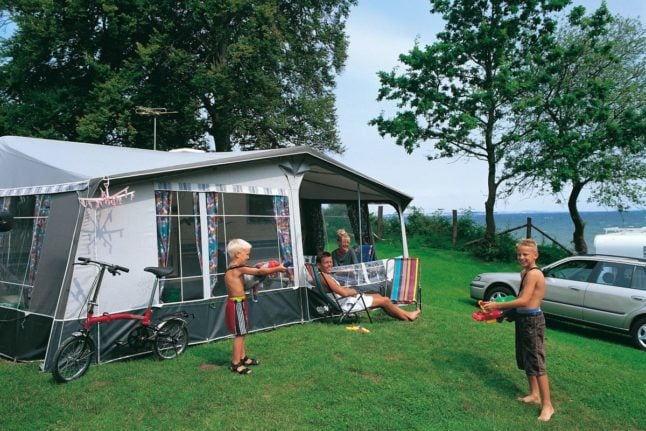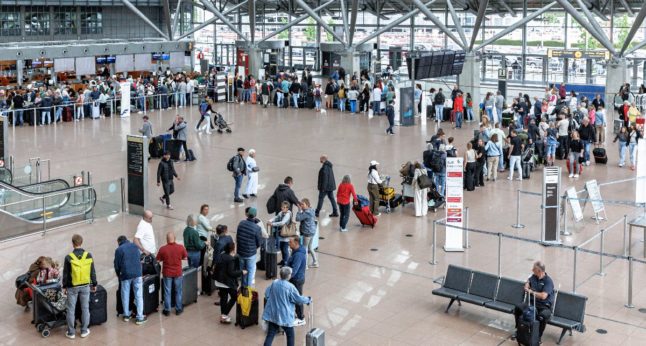With 42.3 million overnight stays recorded, more people than ever before camped in Germany in 2023, according to data released by the statistical office (Destatis) on Monday.
That was up 5.2 percent from 2022, and 18.2 percent above the pre-Covid year 2019.
Camping has steadily gained popularity in Germany in the past 10 years. With the exception of the Covid years 2020 and 2021, which were marked by travel restrictions and accommodation bans, the number of overnight stays in campgrounds has steadily risen in this period.
In comparison, the number of overnight stays with other types of accommodation, like hotels, has not yet returned to pre-Covid levels – still down 1.7 percent in 2023 compared to 2019.
Just over 10 percent of campers come from abroad. In total, 4.5 million international guests camped in Germany in 2023, and 37.8 million campers outdoors in their home country.
Where do people like to camp in Germany?
The most popular camping locations in the Bundesrepublik are split between the northern coasts and the southern forests.
Schleswig-Holstein’s Baltic Coastline was the most popular location, with a total of 3.5 million overnight stays.
The next most popular camping regions included the Black Forest, the North Sea coast of Lower Saxony, the Allgäu and the Lake Constance-Upper Swabia region.
READ ALSO: Holiday like a local: Five of the best camping regions in Germany
Interestingly, campers coming from abroad tend to be primarily drawn to the southwest of Germany – spending the most nights in the Black Forest, followed by the Mosel-Saar and the Rhineland-Palatinate Eifel regions.

One reason behind these regions’ popularity is their proximity to neighbouring countries like France, Luxembourg or the Netherlands, where camping is particularly widespread.
If you’d rather avoid the most popular camping spots, inner-Germany’s lake regions also make for good camping options. The Franconian Lake District, Lusatian Lake District and the Hegau on Lake Constance all have a number of great lakeside campsites to choose from.
How to camp German style
Unfortunately for the adventurous and thrifty, camping outside of designated campsites – so-called wild camping – is illegal throughout Germany. So to avoid any trouble, you’ll want to find a legitimate campground (Campingplatz).
Campgrounds vary immensely in terms of price and amenities, but most of them will have designated zones for RV or trailer camping and tent camping. Picnic tables, fire pits, electrical outlets, bathrooms with showers and even wifi are typically available even in the more basic sites. Whereas more built-up campgrounds operate like resorts with restaurants, swimming pools, washing machines etc.
Prices tend to start around €20 per night for car camping. Sometimes guests coming without a car, such as bike-touring campers, can pay less.
According to Destatis, motorhome camping prices increased by 9.0 percent in 2023 compared to 2022. Campsite fees overall increased a bit more moderately, by 6.6 percent.
This being Germany, making early reservations is not a bad idea – especially at the aforementioned popular destinations, campgrounds can fill up during peak vacation times.
If you are planning to camp on the beach on Mecklenburg–West Pomerania’s Rügen island in August, for example, you may want to contact the campground ahead of time to see about reserving a spot. That said, a lot of campgrounds tend to have space for spontaneous arrivals throughout the season.
Websites like Camping Info or Pin Camp (the camping portal of Germany’s automobile association ADAC) can be useful for finding campgrounds around the country.



 Please whitelist us to continue reading.
Please whitelist us to continue reading.
Member comments